|
I was connecting with Liz Stockton of X-Port Paws recently about No Kill philosophies and specifically about how some people say that if we just did ________________ (fill in the blank with one thing) the problem would be solved and all the healthy and treatable animals in our nation's tax-funded animal shelters would be saved. I wish it was that simple. Really. I do. If you are familiar with this blog or my website at all, you know I promote the No Kill Equation and have since I first learned about it almost 20 years ago after reading Nathan Winograd's groundbreaking book: Redemption: The Myth of Pet Overpopulation and the No Kill Revolution in America. The short explanation is that the Equation is a DIY series of programs that work together to help reduce the number of animals entering shelters (while helping the public) and that help animals who do end up in shelters to be placed faster (know of as a shorter "length of stay"). All shelters can and should learn about the Equation and take immediate action to stop the outdated (and I would argue unethical) practice of ending the lives of healthy and treatable animals for space or convenience. There are other ways to function and to the extent any shelter purposefully remains mired in the past, I view that a betray of the public trust. After speaking with Liz, I wanted to address the "If We Just Did This One Thing" theories I hear about most often. Spay and Neuter. Not a week (often not a day) goes by when I do not learn of someone saying, "if people would just spay and neuter their pets, animals would not die in shelters." It is absolutely true that if more people spayed and neutered their pets in any given community, there would be fewer animals in the community which may mean fewer animals entering the tax-funded animal shelter. I know some veterinarians charge hundreds of dollars for the surgery and a lot of people just can't afford that while trying to pay rent and feed their families. We can tell them that it costs more to care for a litter than to just have animals sterilized but that's a hard sell when your kids are hungry and there doesn't appear to be an immediate risk your dog will cause a pregnancy or become impregnated. Access to high volume/low cost spay neuter is one of the 11 elements of the No Kill Equation which helps keep pet populations low which, in turn, reduces intake. In the city where I work, there is a nonprofit spay/neuter clinic that is open to anyone no matter where they live or how much money they make. The city also funds a spay/neuter program for low-income residents so they can have pets sterilized for $5. This program, the availability of the nonprofit clinic and other factors have helped cut the shelter intake at the tax-funded animal shelter in half over a period of about five years. Communities that make an investment in programs like this are getting ahead of the issue by spending to prevent births as opposed to spending to impound, house and then destroy animals. I also support laws that require any animal adopted from a shelter or rescue group to be sterilized. I know there are some animal shelters and rescue groups that transfer ownership of animals old enough to be sterilized who are still intact. For shame. I know this happens a lot and it is irresponsible. The "promise method" some shelters use to try to get people to have animals sterilized after they are adopted seldom works. People may agree to have the animal spayed or neutered and may even sign a document in which they agree to do that. Once ownership is transferred, enforcement of the promise method is practically impossible. People often mean well and plan to have the surgery performed but then other priorities (either financially or based on busy schedules) prevents that from happening. Once ownership has changed hands, the shelter can't just demand the animal be returned and even if someone signed a document promising to have the surgery peformed, it becomes a civil issue to be handled legally, something I have never seen a shelter attempt. Ever. I do not support mandatory spay neuter for owned animals, often called MSN. This is punitive legislation that tries to force people to have all owned pets sterilized. Even in places that have MSN, there are exceptions for breeders, exceptions for people who do not want their pet sterilized on advice of their veterinarian and enforcement is almost impossible. I blogged about this fairly recently and will not cover this same topic in full again. I do encourage anyone who believes forcing people to have pets sterilized (as opposed to making it easy and affordable) to read my blog linked above. If you still support MSN after having read it, feel free to contact me so we can talk about your position. As Nathan Winograd says in his video No Kill 101 (which I share with elected officials often): "for decades, spay/neuter has been hailed as the singular solution to shelter killing, though it alone has never successfully created a No Kill Community. Why? Because spay/neuter focuses primarily on those animals who have yet to be born, leaving the animals already in shelters and who are under an immediate death threat with no protection from killing. In other words, while a significant investment in sterilization can reduce intakes over the long term, and that is important, it is no substitute for saving lives today." Rescues and Transports. There are those who profess that the single solution to end shelter killing is to get more rescue groups to help get animals out of shelters to transport more animals to different parts of the country. I've read a number of blogs recently that say just that. Rescuers are some of the most hard working people in the country and are to be applauded by us all. But for rescue groups, many more animals would die in tax funded shelters than do now. I clash with some people in animal rescue circles because their adoption fees price the animals they are trying to place out of the market (as they try to recoup veterinary costs through adoption fees alone), because they refuse to limit their efforts to a geographic area (in their efforts to help more animals than they can responsibly care for) and because so many of them have such loathing for people. Animal problems are people problems and it really is not possible to help animals without helping people in some way. In progressive communities, shelter liaison with rescue groups is incredibly important and is one of the 11 elements of the No Kill Equation. Rescue release should typically be just a fraction of all live outcomes with the other live outcomes being the result of returns to owner and adoptions. I know some in rescue refuse to adopt animals locally because they say the people in their area are too irresponsible, can't be trusted, etc. I once had a contact who drove dogs about an hour to a pet store location to hold adoption events. When I asked her how she was ever going to connect in a positive way with the people in her own community if she acted like they could not be trusted, she could not respond. When I hear or read that THE solution to keep more animals alive is for rescues to pull most of the animals (in most cases to transport them to other areas) I simply cannot agree. There are cases in which nonprofit organizations with a physical shelter contract with one or more municipalities for animal control and sheltering. Most rescue groups, however, are foster-based and function off of donations and grants with no tax-funded support. Rescue groups cannot carry the burden of life-saving for any community not only because they have a limited amount of space to house animals and limited funds to help animals, but also because doing so enables the failures in leadership that create unreasonable reliance on them exists. If a rescue group in any particular area is pulling the vast majority of animals, what incentive is there for elected officials to take responsibility for how their shelters function and how money is spent? None. I know a lot of people in the rescue community view saving animals as a life calling. My argument is that they should be considered part of the solution and not the only solution. The No Kill Equation is not rescue release, rescue release, rescue release, rescue release, rescue release, rescue release, rescue release, rescue release, rescue release, rescue release and rescue release. I know a lot of rescuers are frustrated now, particularly those who have historically relied on transports to other states to move animals. That became abundantly clear during the pandemic, when receiving states would no longer take animals from the source states. I know there are times when people find an animal on a site like Petfinder located hundreds or thousands of miles from them or otherwise learn about an animal on social media who is located far away and decide to adopt. I do not oppose transport for the sake of getting a specific animal from Point A to Point B for those long-distance adoptions. I do oppose mass transports from source locations to receiving locations where the lives of animals are already at risk. One such example is the pipeline between northern Alabama and Chicago. People may like the idea of saving southern animals from what they consider a fate worse than death by shipping them north. But news flash. There are plenty of animals in Chicago already who need help and importing them from other states only makes it harder to place local animals in need. And when nothing is done in the source location to address the reasons why so many animals need help, it is another enabling behavior. I know thousands of animals are transported from Texas to Colorado every year. Every life saved is a wonderful, positive outcome. But if we aren't doing anything to stop the flow of animals from Texas we are doing a disservice to the people who live in Texas and the animals being shipped north. A contact of mine who is the president of a local nonprofit phrased it this way years ago and I have always remembered what she said: the number of animals needing help is like the flow of water through a faucet. If we ever hope to stop the volume of need, we have to turn off the faucet. Yes, Jane. Stop dog breeding. The third solution I see most often, particularly on social media, is the way to keep more shelter animals alive is to "stop people from breeding animals." I do not discount that the volume of animals bred in our country, particularly commercially, contributes to the volume of animals in shelters. Millions of puppies are born and sold each year; it is a multi-million dollar industry. I am not aware of any study that shows a direct connection between dogs bred in Missouri with dog intake in Florida or Tennessee or California. It is logical to assume, however, that because millions of dogs are bred in the U.S. and are sold on websites and by brokers using creative marketing that appeals to consumers, people looking for a dog to add to their family often buy dogs through those methods like they would by a laptop or a sofa. I've written many times about issues related to the commercial dog breeding industry which I oppose and which is often supported by the rescue community. I have also written about the fact that dog breeding is legal and as much as people chant, "don't breed or buy while shelter dogs die," that is just not realistic. I always encourage people to adopt as a first option; I do all I can to persuade them they can find a great fit for their family and that shelter animals are not damaged. As much as I would never buy a dog from a hobby breeder (someone who breeds dogs on a small scale for the love of the breed) or small-volume breeder, many people do and that is their right. A co-worker of mine recently bought a Jack Russell from a breeder in Georgia. Do I wish he had adopted instead? Of course. But it was his choice and not something I was able to influence in any way. For people who genuinely feel that breeding is an issue in their community and is leading to more shelter intake, I encourage those people to create and advance local legislation that requires breeders to pay fees for their business, that creates standards for those operations, and that provides criminal penalties for failing to adequately care for the breeding dogs and the dogs they sell. I also encourage them to get involved on the state level to advance similar legislation for the sake of not only the dogs being bred, but the people who adopt them to make sure the dogs are healthy (something severely lacking in many dogs bred in commercial operations). Local ordinances that prevent pet shops from importing dogs for sale in a retail setting are also important to keep businesses like Petland from setting up shop; once a store is open and is selling their puppies, it is almost impossible to stop. Fires and How to Extinguish Them. In thinking back about my conversations with Liz, there is one other issue I want to touch on related to solutions to shelter killing. I am aware of people who spend a lot of time traveling around the county to bring awareness to what happens in our nation's animal shelters, who blog on that topic and who post about it on social media. I firmly believe that awareness leads to education leads to action leads to change. As much as people in animal advocacy and rescue circles believe the public should know about what is happening at their local shelter, most people just don't because it is not on their personal radar. It's incredibly important that we let the tax-paying public know what is happening at the shelter in their community so they know what they are paying for while they are, in most cases, blamed for a process that leads to the death of healthy and treatable animals. Only when people know what is happening can they participate in the political process and let elected officials know what they want and expect, perhaps even voting them out of office.
What I take issue with is the functional equivalent of yelling fire in a crowded room. Don't raise awareness - on any platform - to the needless deaths taking place nationally without also providing information and tools people can use to understand how we can change our society related to how shelters function. And without claiming it will just take __________________ (fill in the blank with one thing) to fix systemic issues. Don't yell "fire!" (animals are dying) without also pointing the way to the exits and explaining how the fire can be extinguished (saving animals using proven programs). The solutions have been known for almost 20 years and are available for the taking. The No Kill Equation can be implemented in any community and will always look different from location to location based on resources, challenges and the amount of public support. If, for some reason, you are not convinced the Equation works anywhere it is fully implemented, fine. Then develop or find some other solution that actually works and which does not rely on the "If We Just Did This One Thing" theory. I think you will find that to be incredibly difficult but am capable of learning new things. If someone can convince me another methodology works better than the Equation, I will consider myself schooled. If you live or work in a community where the tax-funded shelter ends the lives of healthy and treatable animals, speak out. Seek better. It may be necessary to become politically active as part of a group to try to "fight city hall." Don't wait for a large national animal welfare organization to come to your area to save the day because that's just not gonna happen. If you don't hesitate to complain about potholes in the road, timing of traffic lights, garbage pick-up and police response i your area, you can (and should) also be clear about how you want your money spent when it comes to balancing public safety with saving the lives of companion animals. Nothing changes if. . .nothing changes. As Margaret Meade once said, "Never doubt that a small group of thoughtful, committed citizens can change the world: indeed, it’s the only thing that ever has."
0 Comments
I was contacted by a friend of mine recently who shared a blog she had seen on social media about myths related to No Kill animal shelters. This particular author said that animal welfare is her life but it was also making her lose her mind. How every unfortunate not just for her related to her mental health, but because she chose to share information that is not accurate. I presume she means well. I also presume she has read information to cause her to be hypercritical of the No Kill movement. There is no shortage of negative information to be found online. Opposition to progressive animal sheltering has existed for decades back to the early 1970s when large national animal welfare organizations (or so they claim) promoted the idea that killing was kindness and there is much opposition even today by organizations like PETA. I reached out to the author to try to start a dialogue with her in hopes of advancing her education. Will it work? I'm not sure. Cognitive dissonance abounds in animal shelter and animal rescue circles and it can be really hard for people to recognize what they believed for years was, well, just wrong. I will not link to the blog here. I originally planned to write a blog to counter most of the author's claims, but ultimately decided that would not help many people. I've decided instead to talk about myths and truths so the information can be used by others as they advocate for animal shelter reform in their own communities. And so they can counter false information when they see it. As the saying goes, everyone is entitled to their own opinion but we are all bound by truth and share one set of facts. I won't cover the myths already addressed in my book because they have already been covered. If you want a copy of my book and are not a "hold it in your hands" reader, let me know and I'll share the pdf with you for free. No money is being made on the book when you buy it from Amazon (you are paying to have it printed ) so I share it as a pdf file often. Shelters exist because of the negligence of the general public. If every member of a community were mindful and responsible, shelters would sit empty. This is not true. Shelters in most states exist related to public safety laws that require a place for animals not vaccinated against rabies to be housed, to house dogs running at large and to house animals in suspected cruelty cases pending due process determinations by courts. The fact that the best shelters also function as animal care facilities and not disposal facilities is a response to public expectations. Just because a dog is found running at large does not necessarily mean someone has been negligent. There are some people who let dogs run loose in more rural areas which is clearly irresponsible; that's a huge problem where I live and I see the results of that every time I get in my car. Most loose dogs are lost or displaced due not to negligence but due to some unforeseen circumstance. Doors get left open by children, gates get left open by contractors, dogs dig under and climb over fences, fireworks startle dogs, vehicle accidents happen and natural disasters happen. Ask Davyd Smith of No Kill Colorado how many times his dogs have gotten loose and he'll tell you his stories. Cruelty cases often end up related to a form of mental illness called "Noah Syndrome" about which I have written before and while these cases are tragic, they often result in no criminal consequences. As for the claim that shelters would sit empty, that is an incredibly naive statement. There will always be animal shelters and they will always be needed for both public safety purposes and to help those animals who either were, or could be, someone's beloved companion. That is what the public expects and I just don't see that changing any time soon. In fact, as time goes by more and more people are learning about animal sheltering and about No Kill philosophies as they seek better use of their tax dollars consistent with public values. Shelters are forced to make hard decisions to remain available to the public, including euthanizing for space. This is not true. The only hard decision any shelter need make it to stop killing healthy and treatable animals while calling it euthanasia and behaving as if there is no other way to function. The cure for the disease that is shelter killing has been known for almost two decades and it is the No Kill Equation, a series of programs that work together (thus, use of the description "equation") to reduce shelter intake and increase shelter output while helping the public instead of vilifying the public. To the extent any shelter has not learned about proven programs to help resolve systemic issues that lead the unnecessary killing of animals, that shelter is mired in a past that has not kept up with public expectations and advances in shelter medicine. Theirs is a betrayal of the public trust. Rescue organizations should not boast about being No Kill. I honestly know of no rescue organization that is NOT no kill. Rescue groups function off of donations and grants. Exceedingly rare is the non-profit organization that receives any type of funding from tax dollars unless that organization is contracted to handle sheltering as is the case in Fremont County, Colorado led by the inspiring Doug Rae. To take on more animals than the organization can actually care for and place would be irresponsible and is a kind of hoarding. Yes, rescue organizations sometimes euthanize animals who are suffering, irremediably ill or present a genuine public safety risk and we should expect no less of them. But they don't end lives as a from of population control killing. Having said that, I am the first to admit that some tax funded animal shelters describe themselves as being No Kill operations when they are anything but. They do so to garner public favor and even donations while at the same time either warehousing animals or ending the lives of healthy and treatable animals while claiming they were "unadoptable" or "aggressive." That is why it is up to all of us who care about how animal shelters operate (or at least about how tax dollars are spent) to learn about how shelters can and should operate so we can see through use of the phrase No Kill by bad actors and call them out of those false claims. Animals who end up in shelters are unwanted, thrown away and forgotten. As explained above, just because an animal enters a shelter does not mean that animals is not wanted, has been forgotten or has been thrown away. When shelters take that type of attitude, the public becomes the enemy when it is that same public the shelter needs to adopt animals, foster animals, volunteer at the shelter and at events and even donated to the shelter. Doing so is totally counterproductive toward the goal of modifying public behavior = helping people make better choices. When the public becomes the enemy, it creates a divide between the shelter and the public being served (or rescue groups and the public) in an us v. them way that is just not helpful. Change comes when you first demand it from the members of your community.
This is not true. Demanding people behave differently presumes they are doing something wrong in the first place. Whether people in shelter or animal rescue circles want to acknowledge it or not, most people give very little (if any) thought to their local animal shelter or how their personal choices affect how shelters operate when it comes to having pets spayed and neutered, making sure pets can be identified if displaced and making plans for someone to care for their pets in the event of their death or some live crisis. It is up to us to help educate the public so they can make better choices that help keep animals out of shelters. A couple of the websites I manage have content for this very purpose. To help people. In places where the shelter went from ending the lives of most animals to saving most lives, the public did not suddenly move away to be replaced by more responsible people. What changed was the culture that the shelter which decided to save lives instead of end them and be seen as places not of judgment but of help and positive outcomes. Think about it. NOTE: This blog references the deaths of two very young children following their interaction with dogs. Some of the content may be disturbing to some readers. Look at the images below of children interacting with dogs. What do you see? Do you see a cuteness overload? These images make me cringe because I see potential danger in the body language of the dogs and the proximity of the children's faces to the dogs' mouths. Two local tragedies related to children does within a period of a week in my area have brought me back to the subject of our unequivocal responsibility to protect dog bite related fatalities. I have written on this subject many times before and believe we just cannot talk about this enough. On February 26, 2024, 4-year old Beau Clark went into a neighbors yard where he was critically injured by a dog. The boy's father tried to intervene and was injured himself. The dog was originally identified by the Morgan County, Alabama Sheriff's Office as a "pit bull." It was later identified as an Olde English Bulldog. The dog was euthanized. The Facebook page for the sheriff's office posted that no charges were filed after the Investigation revealed that:
On March 1, 2024, a 2-year old boy who has not yet been identified entered a fenced yard by opening a gate. He was critically injured by two dogs, a Siberian Husky and a Labrador/Golden Retriever mix, after he was bitten in the face. Details about his prior interaction with the dogs is not yet know. The owner of the dogs (who were taken from the scene by animal control authorities) said they were in their fenced yard, had no prior history of violent or aggressive behavior and had never been out of the yard. He was not home at the time of the incident. Members of the Madison County, Alabama, Sheriff's Office will conduct the investigation into the child's death. These two locations are less than an hour apart. These are compounded tragedies - for the children, for their families, for the owners of the dogs, for the dogs, for the law enforcement community and for the region as a whole. I feel terribly for everyone involved. Local news stations covering these stories have focused mostly on the topic of "aggressive dogs" and what adults can to to keep themselves safe. I saw a story this morning in which a dog trainer was explaining how to use dog repellent spray and how to get into a fetal position to protect your head. I have yet to see any coverage that addresses the issue of keeping children safe around dogs to prevent tragedies like these even though that should be the immediate focus. It is up to all of us to make sure children are safe around dogs - that includes family dogs with whom we share our homes and dogs who belong to others. I've shared information from the CDC and American Veterinary Medical Association about dog bite prevention before but it bears repeating.
The effects of deaths like this are far-reaching and touch even people who do not have children in their home. If you see interaction between a child and dog you feel is unsafe, please intervene before the situation gets out of hand. It is better to anger the dog owner or the adults responsible for the child than to risk serious injury or death. The National Canine Research Council tells us that dog bite related fatalities are extremely rare because they ordinarily are. Not this week in northern Alabama. There are some articles related to the No Kill movement, particularly related to the phrase “No Kill,” which seem to be perpetual. They are shared, reshared and shared again years after the fact. A local contact of mine for whom I have a great deal of respect shared an article from 2021 recently which takes issue with the phrase “No Kill,” makes claims about open admission v. limited admission shelters and which endorses a sheltering philosophy called Socially Conscious Sheltering about which I have blogged before. I asked my contact for the opportunity to speak with her about the article and about SCS and have reached out to her so we can have that conversation. Much of the opposition to No Kill philosophies is founded on false information. It is not possible to respond to every article written in opposition to No Kill philosophies, but there are times when No Kill advocates need to speak out and be clear in an effort to educate the public. That is the purpose of this blog. The article shared by my contact is entitled, “Language Matters: The False Dichotomy of Kill/No Kill.” It was published on May 7, 2021, by Dr. Jennifer Woolf on a platform called VetzInsight. I’ll address just few things that caught my attention which I feel are most important. [The phrase “No Kill is] divisive and unnecessary. I disagree. To me, the phrase “No Kill” is informative. As Dr. Woolf notes in her article, language matters which means words matter. Shelters must use words the same way as they are used by the public. If I seek the help of my veterinarian to end the life of my geriatric dog to alleviate suffering, that is euthanasia. We do not say I killed my dog. If my healthy and treatable dog ends up in an animal shelter and his life is ended, that was not done for reasons of mercy. We cannot possibly say my dog was euthanized. My dog was killed. No Kill means that we don’t end the lives of healthy and treatable animals and that we use the word euthanasia according to the definition. When we call the deaths of healthy and treatable animals euthanasia, we undermine not only the value of those lives but of the lives of animals who were euthanized as an act of mercy and love. When we refer to a shelter as a No Kill shelter, that means the shelter does not end the lives of healthy and treatable animals. I am fully aware there are some shelters that claim No Kill status to garner public favor when they are not No Kill facilities. It is up to all of us to call out that co-option of the phrase "No Kill" when it happens. When people say the phrase “No Kill” is divisive, they are focusing more on the phrase than they are focused on the lives of animals. I fully promote use of the phrase No Kill because it is already on the public radar and it is not difficult to understand. Shelters are not “kill” and “no-kill." They are “open admission” and “limited admission." Shelters are kill and No Kill. If a shelter ends the lives of healthy and treatable animals for space or convenience, it is a kill shelter. If a shelter saves the lives of all healthy and treatable animals, it is a No Kill shelter. The description of shelters as open admission and limited admission has been the subject of much debate in animal sheltering and welfare circles for ages. People behave as if there are only two options: 1) to intake all animals regardless of source or circumstance; or 2) to limit the intake of animals. Talk about a false dichotomy. Many people believe that municipal animal shelters are open admission related to intake not only of animals found running at large (for which the shelter has a public safety function) but also of owned animals. Absent some contract to the contrary, municipal shelters are not obligated to take owned animals and should only do so on a managed basis - which is the third option: managed admission. Christie Keith wrote a blog on this subject years ago that I have shared many times because it is still relevant today. I quoted part of her blog in my book with Christie’s permission: A shelter or animal control agency that responsibly manages its intake flow is still an open admission shelter. Shelters that fulfill the legal or contractual requirements of their municipality as to what animals they are required to admit, and that additionally have provisions for emergency intake for animals in immediate need, are open admission shelters. But some folks simplified [the phrase "No Kill" to mean] stop euthanizing any pets. I have heard the argument many times that people think “No Kill” means no animals die. It is an argument most often used by people who oppose No Kill philosophies, accusing those of us in the no kill movement of advocating for animal suffering. In almost two decades of animal advocacy, I have never met with or interacted with any person who really thinks that shelters keep suffering animals alive and that no animals are ever euthanized. Of course they are. While they are ordinarily only a very small portion of any animal shelter census, there will always be animals in shelters who are either suffering or are irremediably ill for which euthanasia is the only option. The No Kill movement is one of compassion. The notion that animals would be allowed to suffer needlessly is absurd. The Animal Evaluation Matrix to which I have linked here is an extremely helpful guide related to euthanasia decision by shelters. Many municipal shelters are open admission. This means they take in all unwanted animals including the sick, the old, and the dangerous. In many cases, it also means they legally cannot turn away any animal. I personally know of no municipal animal shelter that is required to take every owned animal right this very minute. Cities and counties just don’t function that way. All cities control the amount of property taken from citizens because there are costs associated with those functions. (I know people object to the description of pets as property, but there are some legal advantages to that at this time in our history particularly related the ability of a municipality to seize animals from their caregivers). The word “unwanted” is also not helpful. Just because an animal ends up in a shelter does not mean that happens because no one wants them. More often than not it is because they got loose from the people who do love them and want them. In cases where people seek to surrender their animals to shelters, there are certain some heartless people who do so and should never have had the animal in the first place. The vast majority of people who seek to surrender an animal do so in desperation due to the combination of some life crisis and their inability to see another solution in the moment. When we see animal problems for what they are - people problems - we can help many people keep their pets by providing them with resources to do that or providing them alternatives to surrendering their pet. With regard to animals found running at large, there are some who are dangerous. This is ordinarily a very small percentage of the dogs entering shelters who may have some cognitive issue which causes their behavior to be unpredictable or makes them a genuine danger to the public. This is not the same, however, as dogs who are labeled as aggressive due to behavior created by the shelter environment itself which often overstimulates dogs and in which the people running the shelter expect those dogs to behave the same way they would outside of the building. On the other hand, many private shelters are limited admission. I would go one step further and stay that ALL private shelters, meaning nonprofit shelters which operate on donations and grants using mostly volunteer labor, are limited admission and for good reason. If a shelter receives no funding through tax dollars, has limited capacity to house animals and limited resources to care for those animals, it makes perfect sense to limit admission to just those animals for which the shelter can adequately provide care in order to function responsibly. In order to honor this relationship between open-admission and limited-admission shelters, there is a new movement towards socially conscious sheltering. It eliminates the false dichotomy of kill/no-kill. It suggests that we're all in this together. I have written about Socially Conscious Sheltering before and I will not cover that subject again here in depth. The foundation of SCS is the Five Freedoms that were developed for livestock and while there is nothing wrong with the freedoms in general, the problem is when the lives of animals are ended because the shelter failed to adequately provide an animal with a particular “freedom.” We must also remember the freedoms do not include a freedom to live, absent which the other five freedoms mean nothing. The website for SCS has been updated since I first blogged about this approach four years ago. The website now includes a number of tenants which ultimately achieve nothing because they are the animal welfare version of a political speech. The words look good on a website. They sound good. How could someone possibly disagree with them? In the trenches of animal welfare advocacy where I spend my time, tenants and intentions don’t do much good to keep shelter animals alive. If that is our goal, the solution is known and has been for almost 20 years: the programs and services of the No Kill Equation which can be implemented by any shelter, municipal or nonprofit.
Language matters. Saving the lives of shelter animals matters more. A city official said something to me a while back that got stuck in my head and has rolled around inside my skull like a rock for months. We were talking about the programs and services of the No Kill Equation which I view as the DIY solution to end the needless destruction of shelter animals. As I have written about many times, the genius of the Equation developed by Nathan Winograd almost 20 years ago is that it can be molded and shaped to fit the resources in, and challenges of, any community. We do not need Nathan to travel to every community to help elected officials change the culture in their tax funded shelters. Interacting with progressive shelters to learn from their methods certainly helps, but examination of each element of the Equation to determine how that element can be implemented in the community is the first proactive step towards animal shelter reform. The city official said that he had kept all of the materials we had provided to him years ago about the No Kill Equation with the exception of the publication which talks about how No Kill animal sheltering is cost effective. He said, “I threw that one away years ago because it’s bullshit.” We were taken aback by his comment which probably made sense to him considering how much money had been spent on the shelter operation in recent years. The city had almost doubled the staff from the number of positions that existed when we began our advocacy a decade ago. The city had also spent close to 3 million dollars to renovate the shelter. Our response to him was that having more paid employees was not as important as supervision of those employees and the tasks they perform. We withheld our comments about the renovation of the building because most of the work was completed and us stating we thought money had been wasted would not have advanced the conversation in positive ways. As a resident of Alabama, I do not lack for bad examples about which to write related to animal sheltering. Recent events related to the shelter that spent 3 million dollars on renovations and another shelter building that will soon be constructed reminded me about that rock rolling around in my head related to how money is spent related to shelter animals. This subject is separate from the subject about why saving lives using the No Kill Equation does not cost more about which I will write in the future. What The City Did It’s a given that many municipal shelters currently in operation were built years ago. Most were built to house animals temporarily as part of what we call catch and kill operations in which animals are housed for a limited period of time and are then destroyed. In many cases, it is a “first in, first out” method of operation. There is absolutely nothing wrong with a municipality or community building a new animal shelter that is more suited to progressive operations or renovating an existing shelter for the sake of modernization. Lake County, Florida, became a No Kill Community under the leadership of the county commission and at a time when the shelter was little more than a glorified pole barn. The county now has a new shelter of which it is proud as the county continues to lead the way in No Kill sheltering operation nationally. But some shelter spending is not only unnecessary, it is wasteful. The shelter about which I (and other members of an advocacy group) met with the city official spent a million dollars to renovate the dog kennel area of the shelter. Additional kennels were constructed. The design is a double kennel for each dog; there are two kennel areas separated by a door that can be opened and closed by the staff. As a result of this renovation, the number of kennels in the shelter was actually reduced by 14 kennels. When the city announced the renovations to the community, it touted the changes as improving quality of life for dogs and making them happier. In one media report, it was said the dogs would be “stress free” (a claim we found absurd). The fact that it would easier for staff to clean the kennels was an added benefit to the double kennel construction. The kennel renovation project was completed approximately three years ago, at a time when the dog live release rate at the shelter was 93%. As of the end of 2022, the dog live release rate had dropped to 87%. In 2022, almost four times as many dogs were destroyed for behavior as were destroyed in 2021 (which is almost as many dogs destroyed for behavior in 2019, 2020 and 2021 combined). So much for improved quality of life for dogs who would be happier and less stressed. Most of the dogs destroyed are very young; their brain development and hormones make them ill-equipped to handle the stressors of the shelter environment. What the City Should Have Done (and still can do) As I have marveled at the million spent by the city to renovate the dog kennels (without any apparent positive result) it made me think of how a fraction of that million dollars could have been spent. The shelter sits on a parcel owned by the city. There is a 10-acre rectangular-shaped rural parcel to the south of the shelter which is owned by the city and has been undeveloped for years. The city could easily have cleared an area in the middle of the parcel to construct 2 covered, outdoor kennel structures like the one built in a neighboring county which houses 30 dogs and which is protected by the weather using the same industrial curtains used in the local livestock industry and which roll up and down. The kennels could have been built from north to south and been surrounded by a simple cleared walking path for staff and volunteers to walk dogs during the day in a forest-like setting. At least some of the dogs housed in the shelter all the time could instead be housed outside during the day to provide them with fresh air and the mental stimulation of nature while avoiding the stress that comes from housing them in brick walled kennels inside the shelter. Total cost? Less than 200k for the buildings plus the cost of clearing an oval dirt walking path. For those who object to housing dogs outside, this would be housing during the day for the most part and many of the dogs who end up in the shelter either live outside or spend a lot of time outside unsupervised, which is how they end up at the shelter. And for those who believe outdoor kenneling during the day would require more staff, consider the fact that the staff has already doubled in the last ten years. This is not about more staff; it is (again) about how those people are utilized. The city has already spent the million and more dogs are being destroyed now for behavior than at any time in the last eight years. Now is the time for the City to acknowledge that the spending benefited the staff by making the kennels easier to clean, but did not benefit the dogs. Considering how little it would cost to provide outdoor facilities to house dogs during the day, there is no reason the city cannot consider the outdoor kennel plan for the future. It is also long past time for the city to fully embrace the No Kill Equation and embrace recommendations made over a period of almost a decade to make the shelter hours more family friendly to remove barriers to reclaims and adoptions, to do community outreach to the areas in the city where most dog intake comes from (which is tracked on a map) to reduce that intake do more resource counseling to help people keep pets in existing homes and recognize that the sharp rise in the number of dogs destroyed for behavior is a situation of the city's making which could be avoided by accepting free help from subject matter experts and by changing the approach to dogs who do poorly in the shelter environment. What The County is Doing The county in which I live has never had an animal shelter even though one is required by state law. For years, the county got around the statute by housing impounded dogs at a veterinary clinic for a rate of $10 per dog per day. I tried to get local elected officials to pool funds to have a metro animal shelter to serve the county and all the cities in the county so people only have to go to one place to find a lost pet instead of doing to five places. I failed. When the county finally began making plans for its own facility before the pandemic, I met with elected officials to talk about how the facility would be operated as I again promoted the No Kill Equation. The drawings I was shown to renovate an old building the county had purchased had way too many kennels for the annual intake by the county and I said as much. I also implored the county to get help on how to run a new facility from a subject matter expert for which I offered to raise money to cover part of the cost. The answer was no. The commission chairman was proud of what he called the “No Kill” status of the county, said he did not plan to run for election again and that he considered the new shelter to be part of his legacy in the county. Fast forward three years. The county continued to kennel dogs in the old building which has still not been renovated. It has also been kenneling dogs at a new location (this time a boarding facility) again at a rate of $10 per dog per day. I am told 30 to 40 dogs are housed this way and have been for months. The county has likely spent 100k in the last year just for that long-term boarding (which one elected official called “dog storage”), a situation which cannot be sustained financially. Because county officials say the unchecked spending has to stop, it has decided that any dog in the system 60 days will be destroyed beginning in May, regardless of the health status of the dog. I was told recently that the county will start with the dog who has been in the county system the longest which I’m told is 2 years. To be clear, keeping animals alive is not No Kill and never has been. I am not sure who is responsible for the decision to board dogs long-term but the consequences of that are obvious. Not only is that arrangement not financially sustainable, it creates behavior issues for those dogs, it prevents families from finding their lost dog and it prevents dogs from being adopted by the public. For shame. I am also told the county has committed to spending more than 600k in COVID Relief funds to create a building that is primarily for administrative purposes with some housing for cats but no kennels for dogs. One elected official told me the focus of the building is more about people than about animals. When I asked about the plan to kennel dogs, he could not answer. What The County Should Do
The county intends to spend more than half a million dollars of COVID Relief money on shelter operations. Reserving my personal opinions about the appropriateness of that spending, the money is available for use. I can envision no scenario in which it is appropriate to spend more than half a million dollars on a building that has very little to do with animals and nothing to do with the types of animals that make up the majority of the county’s shelter intake: dogs. So what should the county do with that money? It’s a lot of money and the opportunities are endless. If I was an elected official in the county, these would be my recommendations:
Beyond the spending, the county should also stop using the phrase “No Kill” to mean “we are keeping animals alive.” County officials should learn about the programs and services of the No Kill Equation to help reduce shelter intake and increase shelter output moving forward so it is never in a position in which elected officials sees a mass euthanasia event as the only way to resolve problems of its own making. I have extended an offer to my county commissioner and the animal control officer to begin their education about the No Kill Equation. Time will tell if they are willing to break away from the status quo and mistakes of the past to seek a better future for the residents of the county and the animals with whom they share their lives. As we reach the end of another year I am taking stock, as do many people. I don't make resolutions for the New Year, per se. When it comes to my animal welfare advocacy, I take an inventory of sorts as I look back at the good, bad, tragic, triumphant, unfortunate and avoidable. As we head into 2023, I have decided to do my best to help those advocates who are willing to help themselves. I am contacted daily by people who want help. Some want to know to report a puppy mill. Some need help placing an animal or finding a lost pet. Some are not sure what to do with a situation about animal abuse or neglect. Some have an issue in their area with someone trying to eradicate community cats and they want to stop that. Some seek help related to No Kill animal shelter advocacy. You get the idea. The subjects vary greatly. I can often provide people help quickly by referring them to a page on my website, to a blog I've written, to another organization or to a subject matter expert. I am happy to help when I can and within the scope of my knowledge base. I often engage with fellow advocates like me who are looking to affect change in their own areas related to the operation of the tax-funded animal shelter. I do not provide consulting services and I do not do boots on the ground work in those places. I work a full-time job in the legal field, manage three websites, lead a No Kill political advocacy group in my area and participate in a No Kill coalition of fellow advocates who try to help other advocates across the country (we are unfunded and are all active in advocacy in our own communities). I have a family which is my priority, as it should be for all of us. I know some situations are just beyond my ability to help anyone. I cannot help someone fix all that is broken with animal shelter systems in large cities in which millions of dollars are in play like Los Angeles, Chicago, Atlanta, New York, Houston or Miami. When shelters in huge cities are regressive and there are likely to be contract issues, there can numerous layers to that dysfunction which has often been calcified over the years. When we are talking about a city or county level for small to medium sized municipalities, I can ordinarily help with that. I have engaged with advocates in numerous states and often engage with elected officials in those states to help them understand what the phrase "No Kill" means, to learn about the No Kill Equation and to share what has worked well (and has not worked well) in my area. At the heart of every conversation, be it by telephone, email or video chat is education. Just like I had to educate myself in order to become a more effective advocate, people who are seeking change in their own areas must advance their own education in order to be the change they seek where they live. There is no shortcut to change and we all have to pay the price by spending time to become informed on the subjects about which we advocate. With very few exceptions, there is no person or organization that will come to your community and fix it for you. There are large organizations that promote ideas, blog, hold seminars and have state representatives who perform a variety of functions. They do not ordinarily address issues in specific cities or counties on a large scale. There are also consulting groups which provide help related to animal shelter reform on a paid basis, not all of which are created equal. For the most part, change begins with all of us in our own backyards. I was recently reminded of a blog from 2011 written by a fellow advocate in which she made a reference to a famous line from a sitcom from years back. Shirley Marsh of Yes Biscuit wrote a wonderful blog called "I Can't Save Every Pet at Your Local Shelter, But I Know Who Can." I often call this the "no soup" blog. I've shared it countless times and Shirley was gracious enough to allow me to include the following quote in my book: In reality, [animal shelter reform] takes a group of dedicated animal advocates willing to stir things up in their own community by challenging the status quo and refusing to accept killing as a means of population control. There are consequences to such actions: old friendships may be broken, egos may be bruised, glass houses may be shattered. This ain’t no fairy tale. It’s hard work, which will be met with resistance by some. You will no longer be able to ride the I Love Everybody and Everybody Loves Me bus. You will not be nominated for homecoming queen. No soup for you. Like all things in life, working to end the killing in your community is a choice you must make for yourself. You can choose to carry on with the ‘save a few and kill the rest’ status quo. You’ll get to keep all your Facebook friends and play Farmville with them in between posting pets from kill lists. Or you can choose to reject the idea of needless killing as justifiable in any way. You’ll make some people feel uncomfortable, and they will resent you for it. But you’ll have the opportunity to educate and learn from others who are on the same path. No longer will you feel an awkward compulsion to defend those who kill friendly pets in shelters while simultaneously advocating to save shelter pets. You will have the clarity of mind that comes from knowing where you stand.” Shirley used Seinfeld. I use The Wizard of Oz. If you want to get to the Land of Oz (create a No Kill community where you live), I can do my best impression of a member of the Lollipop Guild as I grimace and kick my feet (to show my conviction) and encourage you to "follow the yellow brick road" (by following the programs and services of the No Kill Equation). I can explain the journey in general terms and wish you the best, warning you to BOLO for that green witch and her flying monkeys (the opposition to animal shelter reform) hoping you reach Oz and find all you seek. But I cannot make the journey for you. That task is yours and yours alone. Each community is different. If a person or people in a particular community want change, they know best what resources exist in the community as well as what challenges exist there. Only people who live in the community can become truly politically active in that community to seek shelter reform by engaging with their own elected officials, with community stakeholders and the with the animal loving public. The genius of the No Kill Equation is that it can be molded and shaped to fit any community. By the people who live and work there. If you contact me in 2023 seeking help to make yours a No Kill community, I will do my best to help you provided you are willing to help yourself. I will ask you watch the 27-minute video you see below about the No Kill Equation. I will implore you to read Nathan Winograd's book, "Redemption: The Myth of Pet Overpopulation and the No Kill Revolution in America." I will ask you to consider reading my book if I think it will help you. I may refer you to pamphlets available on the No Kill Advocacy Center website to read to further your education. If you are willing to do those things, you will be well on your way to being educated enough on the subject to talk about it, educate others about it and persuade them that your community can, and should, become a No Kill community. I truly believe a time will come when all tax-funded animal shelters are No Kill shelters. How quickly we get there is up to all of us and how well we educate ourselves and those around us. As is the case with many of my blogs, local events prompted this one. I talk to some great folks across the country doing all they call to learn and to affect change. I had the misfortune of trying to help someone recently whose issues were well beyond by ability to help at all. I was not able to provide the guidance or help that person expected. Rather than thank me and move on, she chose to harass me and threaten me. At one point she created a recording in which she said she wanted "something meaningful." She did not want to be told to read another pamphlet or write a letter in the age of technology. She thought I had single-handedly brought reform to the entire state of Louisiana; I've driven through Shreveport four times, but that's the extent of my exposure to the Pelican state. She also thought it was the role of Nathan Winograd to get personally involved in her community, file a Section 1983 lawsuit on her behalf and spend time fixing what is broken because she just did not have the time. It got to the point that I had to block her on Facebook and block her phone number. As unhinged as she was, I realize it may have been due to frustration. I get it. But here's the deal, as we used to say in the Army. If you ask someone for help and they cannot help you, do not then turn your rage to the person you approached for help. Move along. All our lives are too short to expend time and energy in ways that are counterproductive to our values and goals. There may be someone else you can help you, but you have to own your outrage, put in the time yourself and not expect someone else to create your own future for you.
My book about our advocacy in Huntsville, Alabama, is priced to print on Amazon (which means no money is being made). I often blog here about No Kill advocacy and philosophies and I am active on Facebook, at least for now. You are welcome to contact me. If I can help you, I will. Countless people have helped in the the last two decades of my advocacy and I know that individual folks "in the weeds" like me have to help each other whenever we can. There's a saying that goes, "the more things change, the more they remain the same." This is especially true when it comes to opposition to animal shelter reform which doesn't seem to change much over the years. I wrote a blog in 2016 called The Burden of Change in which I talked about the arguments by opponents of No Kill animal sheltering that advocates must meet certain requirements in order to speak out about what is happening at tax-funded animal shelters. I shared the blog recently related to some advocates in Columbus, Georgia, who are trying to bring awareness to the animal shelter operation managed by the City of Columbus and opposition to that advocacy. I wrote the blog years ago and thought it worthwhile to touch on this subject again. People who advocate for reform of animal shelters are often told they cannot express their opinions unless they meet certain requirements. The typical push-back from shelter employees, shelter volunteers and some in the animal rescue community is that people have no right to criticize the shelter unless they:
Let's start with the obvious counter to the push-back. Everyone has a right to free speech under the First Amendment to our Constitution. Everyone. When it comes to operations funded by tax-dollars, those operations are inherently subject to public scrutiny and criticism, because the public is paying for those operations. The people employed in tax-funded animal shelters are public servants and are answerable to the public being served whether they like it or not. People complain about municipal functions funded by tax-dollars every day and think nothing of it. Road conditions, timing of traffic signals, response time of police and fire departments, conditions at public parks and venues, zoning regulations. We do not ask people to participate on a repaving crew before they are allowed to complain about a pothole in the road. We do not ask people to help mow at a city park before they are allowed to complain about broken equipment in the park. We do not ask people to help investigate crimes or help put out a fire using a garden hose before they are critical or a police or fire department. Animal shelters are the only tax-funded operations that rely so heavily on volunteers to perform tasks that would otherwise be performed by paid staff. Those volunteers are part of the No Kill Equation and are incredibly important to the well-being of the shelter animals. Volunteers also become the eyes and ears of the community as they interact with staff and the animals. But - news flash - being a volunteer is not a perquisite for free speech and having more volunteers is not a guarantee of a shelter's success. The No Kill Equation is 11 elements, and it is not just about people volunteering. Consider these examples. In one community, people are critical of the regressive animal shelter and are told they cannot have an opinion unless they volunteer. They do. They play with cats, walk dogs, clean kennels, do fundraisers and otherwise perform tasks that would be done by paid staff. They volunteer for months in an effort to help animals but are powerless to address systematic problems which cause the killing of healthy and treatable animals. They are told if they are openly critical of what they experience in the shelter, they will no longer be allowed to volunteer. In another community, people are critical of the regressive animal shelter and are told they cannot have an opinion unless they volunteer. They decide it would be more productive to educate themselves about No Kill philosophies and programs so that they can promote progressive sheltering with elected officials who oversee the shelter operation and educate the public about how their money is being spent in their name. This is what we did in Huntsville, Alabama. We were told we could not have an opinion unless we volunteered. We felt our time was better spent trying to resolve the systemic issues that led to the death in the first place. We were able to help bring about change through advocacy, something we never would have achieved through volunteering alone. There's another saying that says you're damned if you do and damned if you don't. I was criticized for years for not volunteering in the shelter. Once the shelter changed the culture and began saving more lives, I thought it was safe for me to volunteer so I did. I went to the shelter on my lunch break and walked dogs, I created short videos to help place dogs, I did fundraisers to help the shelter purchase supplies like slip leads and I encouraged other people to volunteer. It became immediately obvious to me that I was not welcome in the shelter by the staff and other volunteers due to my advocacy, but I continued volunteering anyway. It was about helping animals and not about me individually. I ultimately stopped volunteering when dogs I was trying to help were destroyed for "behavior" based on reasons that made no sense to me and after I received a nasty message from the volunteer coordinator. She criticized me for only walking what she called the highly adoptable dogs and told me I would "piss myself" if I interacted with the dogs she interacted with daily. I was tempted to respond that as an Army veteran, it takes a lot to cause me to lose control of my bladder but kept that to myself and walked away. I suspect that the city attorney would not have been happy with a volunteer claiming to be put in a dangerous position for the sake of a city department. My point is that I did not volunteer as a matter of principle. Then I did volunteer and even that was not enough to satisfy my critics which is no surprise at all. Nothing I could have done would have been enough for them so I choose to spend my time in other ways which I believe are actually productive. These include screening of city council candidates related to support of No Kill philosophies, data analysis, keeping the public informed of how their money is being spent, meetings with city officials and meetings with members of the city council to promote more shelter standards being codified to preserve the progress that has been made at the shelter and to keep the city from going back to a time when half the animals entering the building were destroyed. When people tell you that you have to do certain things before you have the right to free speech, that is a red flag. And while volunteers are incredibly important to animal shelters and are part of the No Kill Equation, volunteering alone does not reform a broken and antiquated model of animal sheltering. The burden of change is still not mine to carry and it is not the responsibility of people who have the audacity to speak out and ask for better use of tax dollars. You can stop telling us that if we would just be nicer or would just volunteer everything would change. No. Everything changes when those who are responsible for making life and death decisions regarding shelter animals choose life, take responsibility for what happens in their buildings and then invite the public they serve to be part of a new and better future. They can start by educating themselves about the No Kill Equation using this 27-minute video from the No Kill Advocacy Center called No Kill 101. While I do not require people who work in or volunteer in shelters to watch this video as a prerequisite to defending the killing of healthy and treatable animals in shelters, it makes perfect sense for them to use some of the time they would otherwise spend on social media defending the killing to instead educate themselves. Not a month goes by when I don't hear someone talking about or read something on social media supporting the concept of Mandatory Spay/Neuter as the solution to "pet overpopulation" related to the destruction of healthy and treatable animals in animal shelters. The argument is that if we just punish people for failing to have pets sterilized, it will serve as an incentive for them to comply. That approach always reminded of a phrase from my Army days that goes, "the beatings will continue until morale improves." I understand the allure of the "there ought to be a law approach." It would be wonderful if making a single law in a city, county or state would magically resolve numerous issues at one time. The problem is simple: Mandatory Spay/Neuter just does not work. Most states have laws which say that animals adopted from animal shelters and from rescue groups must be sterilized. Laws like this are vital. Those animals adopted out are the end of the line and will produce no offspring to add to local pet populations. On the flip side, it makes no sense at all to adopt out unsterilized animals who will then create offspring which may then end up in the shelter or with a rescue group, thereby creating a never-ending cycle of adoption, birth and destruction (in most shelters). That would be the animal shelter/rescue version of Sisyphus. To be clear, when people talk about Mandatory Spay/Neuter (often called MSN for short), they are not talking about laws related to shelter and rescue animals. They are talking about laws that require ALL animals in a given geographic area be spayed and neutered to include owned animals. (People often lament that animals are considered property under the law. When it comes to MSN, that is a good thing. People have a right to determine what happens to their own property, making room for an argument that MSN is actually unconstitutional). I learned last week that a person in my area had written an ordinance for the city in which I work to enact MSN. I presume that person was well-intentioned and just did not realize that what seems good on paper doesn't translate to practical application. In the process of researching the issues with MSN, it occurred to me I had not seen any recent blogs on the topic. This is why I wrote this blog. Much of the discussion is dated to a degree because this is actually a fairly well-settled issue in animal sheltering. The world is not flat, Elvis has left the building, we went to the moon and MSN does not work. I'm sharing my research here to make my argument in opposition to MSN, to help educate some folks along the way and to provide an example of what one community has done related to spay and neuter which makes MSN irrelevant. These Organizations Oppose Mandatory Spay Neuter The following organizations all oppose MSN. There are more, but I consider this my go-to list when I engage with people about this subject. Click on the name for each organization to learn more about opposition to MSN. American Veterinary Medical Association American College of Theriongenologsists Humane Society of the United States MSN Position Humane Society of the United States (regarding veterinary positions on spay/neuter generally) ASPCA Best Friends Animal Society No Kill Advocacy Center National Animal Interest Alliance No Kill Learning (explaining the difference between "pet overpopulation" and "shelter overpopulation) related to MSN I would be remiss if I did not mention an article written by Brent Toellner about MSN which I have shared too many times to count and shared as recently as last week. He wrote it as KC Dog Blog prior to being named the National Programs Director for the Best Friends Animal Society. The AKC also opposes Mandatory Spay/Neuter. I do not support the AKC and will not link to their information here. You can find their position using a Google search. They Oppose it Because Mandatory Spay Neuter Does Not Work The reasons why organizations oppose MSN are vast. These are what I consider the highlights. I have paraphrased some of the position statements of the organizations below and some of the information was provided by Nathan Winograd of the No Kill Advocacy Center.
Enforcement Issues With a Mandatory Spay Neuter Ordinance All tax-funded animal shelters serve a finite geographic area. Some are led by a single jurisdiction within that area. Such is the case in the city where I work, Huntsville, Alabama. Huntsville Animal Services provides service to the City of Huntsville and Madison County (excluding the City of Madison); animals enter the shelter from the entire county (minus Madison which does its own animal control functions). Ordinances enacted in the city are only enforceable in the city and not the county. Madison County lacks home rule which means it cannot enact its own animal laws absent a bill being filed in Montgomery and passed through the state legislature. (There are some other ways to enact laws in counties which are complicated and not worth discussing here). The reality is that the county cannot just pass a resolution and change how it functions whether that has to do with spay/neuter, chained dogs or some other animal issue. There are essentially four groups of animal owners related to any attempt to enforce MSN: 1) those owners whose animals would be exempt (i.e. because they are registered with some organization like the AKC and participate in shows); 2) those owners who would seek exemption for their animals due to opposition to spay/neuter of their pets based on advice from their veterinarian; 3) those owners who have already had animals sterilized or will do it voluntarily; and 4) those owners who cannot afford to have their pets sterilized (or believe they cannot because the fees ordinarily charged by many full-service veterinarians and lack of knowledge of low-cost alternatives). It can be extremely difficult for even a veterinary professional to visually determine if an animal, particularly a female, has been sterilized; it would be virtually impossible for an animal control officer to make those determinations in the field. The only way people would be "discovered" to be in violation would be if their animal was picked up running at large, encountered as a result of a complaint or if they were reported by a veterinarian or some other person. Most, if not all, cities lack the ability to devote resources just to enforcement of MSN which, in most cases, would affect people who lack the ability to pay a fine. If a city did choose to divert resources to MSN enforcement, that would mean taking resources away from public safety functions or shelter functions to get lost animals back home, to rescues or into new homes. The resources used for enforcement include time and money. If a municipality is prepared to use time and money to enforce a punitive law, it does better to use those same resources to help people instead - which is what Huntsville is already doing. The Huntsville Story I have written before about my animal shelter reform efforts in Huntsville because it has been the focus of my advocacy for more than 15 years. While there are more steps which can be taken by the city to be more progressive regarding the operation of the tax-funded animal shelter, I must give credit where it is due related to the community making spay and neuter both accessible and affordable. The only short-coming of which I am aware is a lack of effective marketing and community outreach so more people know about the resources available to help them. The City of Huntsville created a spay/neuter program for low-income residents in 2009 called Fixin' Alabama. The city originally invested 20k a year into the program and now invests 100k a year in the program. This, combined with other factors, has reduced intake at Huntsville Animal Services from approximately 10k a year (in 2009) to around 5k a year (since 2015) even though the city has grown and is now the largest city in the state (having been recently named the Best Place to Live by U.S. News and World Report). We know it can take years for programs related to spay/neuter to show results. These results for the City of Huntsville speak for themselves. Making it easier for low-income residents to have animals sterilized removes the judgment, helps them do the right thing and keeps animals out of the tax-funded shelter and other local shelters. Huntsville is home to the North Alabama Spay & Neuter Clinic which is one of only four such clinics in the state. It is open to anyone regardless of income or where they live. This makes it easy for people who may not qualify for Fixin' Alabama to get a pet sterilized. It is also convenient for people who live and work in Huntsville, regardless of income. The clinic has a 2-3 week waiting list. Demand is high and prices are low. The clinic has performed more than 36,000 surgeries since it opened in 2010 - in spite of some time periods during which the state veterinary board was determined to close all non-profit spay/neuter clinics in the state. There are several nonprofit organizations that help people with spay/neuter. SNAP (Spay Neuter Action Project) receives 39k a year from the Madison County Commission to have pets spayed/neutered. Another example is HAWS - Helping Animals Without Shelter. This is a judgement-free organization that helps people keep dogs contained, helps with dog houses and food and helps with spay/neuter. There are also several rescue groups in the area who will spay/neuter animals for free or help offset costs for sterilization on a case-by-case basis. All of this means that Huntsville has numerous spay/neuter resources which negate the need for a mandatory ordinance even if one worked. The City revised the city code related to animals in the fall of 2018. It enacted MSN internal to the shelter which states that any animal impounded can be sterilized. I am not entirely certain about the legality of this local law; my advocacy group in Huntsville questioned it prior to it being enacted. Time will tell if it is challenged through litigation. I am told by the shelter director that if a family cannot pay to redeem their pet or pay for the sterilization surgery, the fees are waived. (As a related subject, there is already a state law requiring animals adopted from shelters and rescues be sterilized. It is not consistently followed in the state. That issue is separate from requiring sterilization of owned animals.) What You Can Do If you live in a community that is considering Mandatory Spay/Neuter in an attempt to reduce pet populations, I hope you will share this information and consider what it is you really hope to accomplish. I would argue that while it sounds like a good idea, it just is not. If you live in a community which already has MSN on the books, I hope you will take steps to try to repeal that law by working with your shelter director and local elected officials. It is likely the law was enacted with good intentions by people who just did not realize the unintended consequences that come with MSN. I would not be surprised to learn that the law is either not being enforced or is being enforced only as a secondary offense.
As an unapologetic supporter of the No Kill Equation, I also hope you will learn about the 11 programs and services of the Equation, one of which is access to high-volume/low-cost spay neuter services. Let's stop punishing people and instead make it easier for them to make good choices which affect their companion animals, their families and their communities. If you have a companion animal in your life of have ever been inside a pet supply store, you are probably familiar with the KONG brand. KONG makes a variety of dog and cat products from toys to toy stuffing to treats to puzzles to scratchers. The volume of products is vast and goes way beyond what you may have seen in stores. I didn't realize until recently that KONG doesn't advertise. KONG sells what I consider self-marketing products. The name is so well known that the products essentially sell themselves as a result of quality and a result of word of mouth advertising between satisfied customers and KONG Believers. KONG also has a program to help shelters called KONG Cares in which it distributes factory seconds to non-profit organizations at reduced prices. But there is a new program being rolled out by KONG which I'm blogging about today. I've known about it for months but was sworn to secrecy because the program was developed in my area as a result of some circumstances which caused a KONG employee to have a true "aha!" moment for the sake of animals. Some explanation is in order. In the summer of last year, people were still fostering and adopting a lot of animals during the height of the pandemic. Many animal shelters were closed. Some shelters were seeing people on an appointment-only basis and some still function that way (unfortunately). Progressive shelters were using changes to their operations to try to find ways to keep animals from entering the shelters at all by implementing social services programs to help people. The HASS - Human Animal Support Services - model of shelter was developed during the pandemic and is in pilot programs today. The basic idea behind HASS is to "keep people and pets together. We are bringing animal welfare organizations and community members together to engage in partnerships that support the bond of people and animals." As I thought about changes taking place nationally, I wondered how to help people more in my own area. I lead an advocacy group called No Kill Huntsville which was created to encourage the City of Huntsville to save more shelter animals. Part of our advocacy is interacting with the public to help modify their behavior. We decided to put together what we were calling a pet resources guide to help the public find organizations to help them find pet food, help pay for veterinary care, refer them to trainers or behaviorists, provide short-term foster placement, etc. A local television station did a story about our proposed resources guide. The plan never came together. We could not get enough organizations to provide us with input to create a guide and so the idea was disbanded, at least for now. But one good thing happened. When the story was on the news, Sandy Howle, an employee who works for KONG as a Training Ambassador, saw it and reached out to our group. She asked what she could do to help and that started a conversation with her about what we hoped to accomplish. Sandy was the person who had the "aha!" moment when she realized that KONG could do more to help not just animal shelters but shelter animals and the people who adopt them. Sandy developed an idea for a shelter enrichment and education program which she pitched the corporate folks. It should come as no surprise that they loved the idea. The test location was at the Greater Huntsville Humane Society in Alabama and there are now plans to take the program national to help shelters, shelter animals and animal caregivers across the country. The program includes educational classes for the shelter, volunteers, fosters and pet parents. KONG is also providing a swag bag for people that adopt. There are plans to hold KONG stuffing events, building sensory gardens and dig pits, holding donation drives. The list goes on. I've asked Sandy to tell us more about how the program began and about the plans for the future. I'd like to thank her for taking the time to share this wonderful news. Sandy, prior to us connecting, I knew about the KONG Cares program. Were there other programs KONG was doing to help shelter animals? We have always been involved in the shelters with our KONG Cares program and donations of product and raffle baskets. We also have our Pet Pros Shelter program that shelters or rescues can sign up for through our website at www.kongcompany.com. We help provide educational tools and marketing materials that shelters or rescue groups can use. Your group can also be entered into regular drawings for KONG Cares product, raffle baskets, and swag. You and I emailed back and forth a bit about the pilot program in Huntsville but I'm not sure I explained it correctly. Can you tell us what you did with the Greater Huntsville Humane Society to get things started? The first thing we did was training for the Animal Care Staff and anyone else who wanted to be involved. The first training was "KONG 101" where we discussed not only KONG, but the instincts of dogs, how that comes into the home and the "problem behaviors" it can create, and how KONG can help be a solution for these behaviors. We also did an enrichment training. We talked about why animals need enrichment and about different things the shelter or fosters could do in their everyday routines that would help provide enrichment to both the dogs and cats in the shelter or in foster homes. The shelter was able to take some of the ideas and run with them, for example, creating a "foster a plant" program to create a sensory garden for the animals. We also have a partnership with a distributor that is selling discounted enrichment kits to the shelters. These kits will go home with the newly adopted dog or cat. The hope is that the animal has enrichment in the shelter, and this can now be rolled into the home with this enrichment kit to help alleviate some of the stress on the new pet family and the new pet. We also have a partnership with Fig & Tyler Treats who, not only, have a bag of treats in the enrichment kit, but also have created a shelter give back program in which the shelter can earn free treats to use in their shelter. Now that the program you proposed will have a national roll-out, what can you tell us about what KONG plans to do to help other animal shelters? One of the things that we have learned is that both cats and dogs need enrichment in their lives. Enrichment leads to a happier healthier life. While we know there are many shelters and rescues that have great enrichment programs already, we also know there are many that do not. Our goal is to share this program and education so that someone can create an enrichment program in their shelter or we can help take their current program to the next level. We pair this enrichment program with the KONG Cares and Pet Pro Shelter Program and we are able to help reduce the stress in shelters and keep dogs and cats happy, which in turn helps them become more adoptable. If there is someone with an animal shelter who reads this blog and wants to make sure their shelter can participate in the program, is there something specific they should do to sign up? They can reach out to me via email or phone and I can give them more information about the program. I can be reached at 661-433-7687 or [email protected] Fun Facts: KONG's story began with a German Shepherd named Fritz, his owner, and a Volkswagen van transmission part one afternoon in 1970. KONG ran one commercial in the 1970s when the first KONG hit the market. The commercial ran one time only in the middle of the night because that was the affordable spot at the time. KONG rubber products are made in Golden, CO and KONG Consumables are made in the USA. KONG is distributed in over 80 countries and millions of dogs worldwide. (images courtesy of the Kong Company, Inc. and Snyder Building Construction)
I’ve been blogging about a lot of books lately. That’s not why my Paws4Change platform exists, but it’s not a bad thing either. Countless wonderful books have been published related to the topics I cover on my website. I think at some point along the line, I ended up on a list “somewhere” of people willing to read and blog about books, so I get a new request about once a month. I’m okay with that. I can pick and choose which books I read and consider. The latest request surprised me a bit because I was asked to read a children’s book. I’m certainly no authority on that genre and it’s been many years (okay, decades) since I was a child myself. I agreed to read and blog about the book for one simple reason: I believe our future is one in which adoption and rescue of companion animals will be the norm and will be the go-to option thanks to the youth of today. I grew up in an animal friendly household, but I really didn’t even think about animal shelters until I was an adult. I knew all of our childhood pets were either adopted from a shelter or adopted from a family who could no longer care for them, of course, but the concept of an actual building where animals in need were housed just was not on my radar because I had never been to a shelter in person. As I’ve written about here and in my book, it was much later in my life when I learned what happened to most animals in shelters and I became an animal welfare advocate as a way to own my outrage. Times have changed. A lot. Children today are born into a society in which the subject of shelter and rescue animals is already part of their existence. They may be young, but they are much more aware of the need to help animals than I ever was as a child. I can’t count the number of times I’ve heard about children who have asked for items to donate to a local animal shelter instead of receiving birthday gifts or other children who have found some creative way to volunteer for or help an animal shelter because to them, it’s just the right thing to do. Scout troops make toys and beds for shelter pets and groups of children read to shelter pets to help them build confidence in their reading skills. Children bring me hope that we will truly become a more progressive society over time as old attitudes fade away and companion animals receive the care, attention and commitment they deserve. But, on to the book. Tails from the Animal Shelter is a delightful book. It was written by Stephanie Shaw and illustrated by Liza Woodruff. The book itself is a work of art in many ways. It is wonderfully bound and will last for years. What hit me first was the illustrations. From the front cover to the back cover and all pages in between, the book is filled with wonderful drawings which demonstrate diversity in the people and imperfections in the animals. What struck me when I opened it was that it is a combination of imagery, poems children will enjoy and educational information. I consider it a good introduction into the subject of shelter and rescue animals which is age appropriate (even though the subject can be dark for many of us adults). It provides just enough information on the plight of shelter animals to generate questions from and discussions with children so they can learn more, but not so much information that they tune out or feel overwhelmed by the subject. I also appreciated the fact that the book introduces a variety of pets well beyond dogs and cats so that children learn there are options for families based on their interests and ability to care for a pet. I also appreciated the length of the book. It was far too short for me as an adult (just because I wanted more), but is probably a great length for school age children who can read. (The age range listed for the book on Amazon is 5-8 years with a grade level of Kindergarten to 3d Grade; my personal opinion after having spoken to a couple of teachers and some parents is that this range may be a bit low. I leave it up to all parents, of course, to determine what books are appropriate for their own children.) I am well past the target age group, so I decided to enlist the help of some friends to get their impressions of the book. Thanks to Ally and Lacy for taking a few minutes to talk about the book! (image of child reading courtesy of National Mill Dog Rescue)
|
AuthorI am an animal welfare advocate. My goal is to help people understand some basic issues related to companion animals in America. Awareness leads to education leads to action leads to change. Archives
July 2024
Categories
All
image courtesy of Terrah Johnson
|










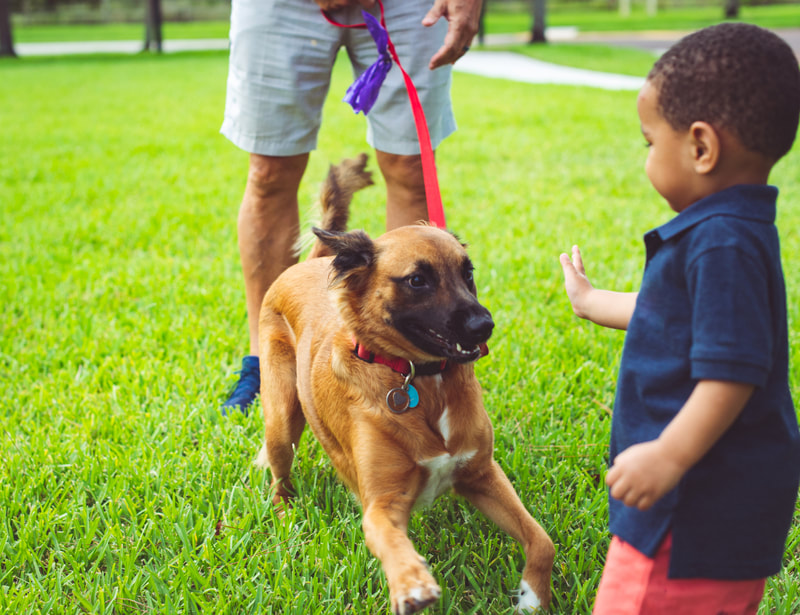


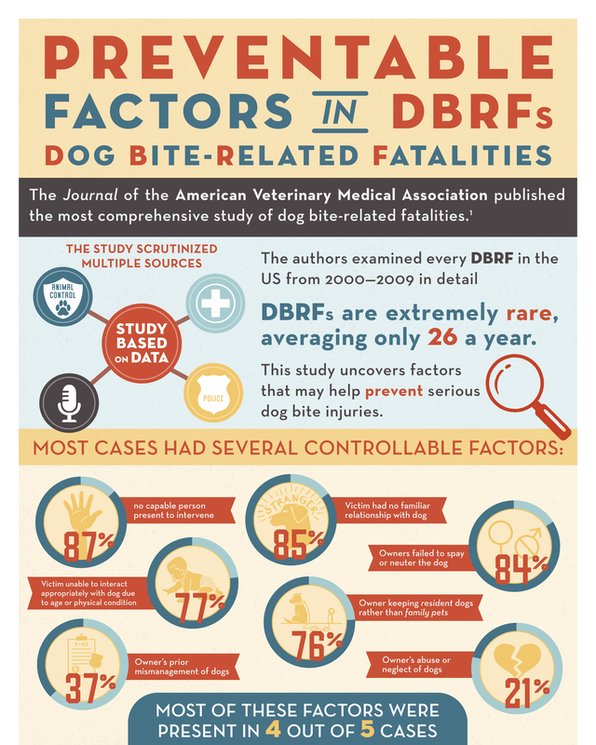


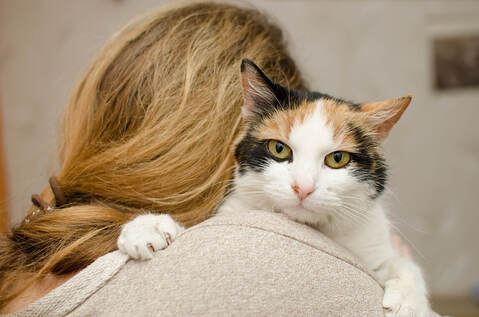
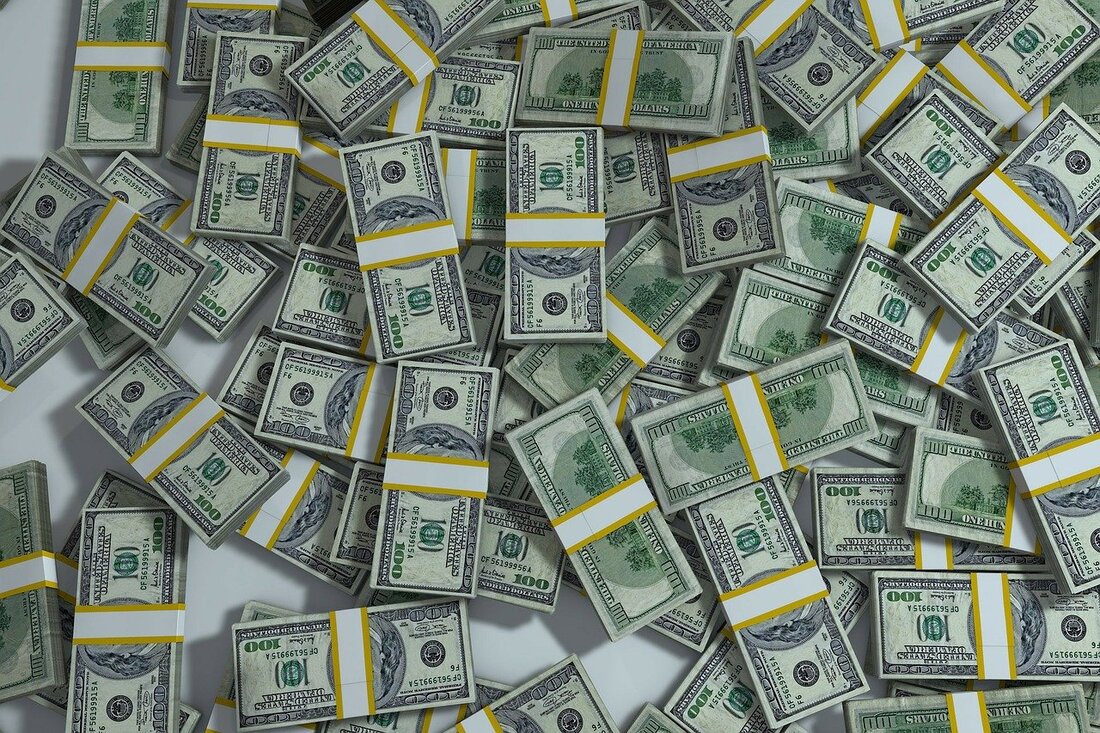
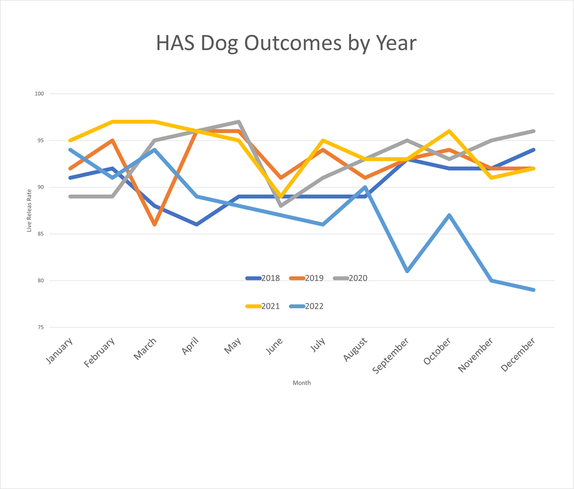
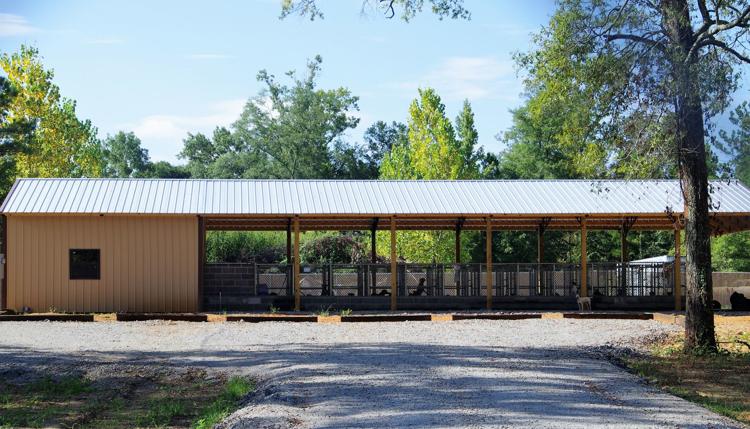
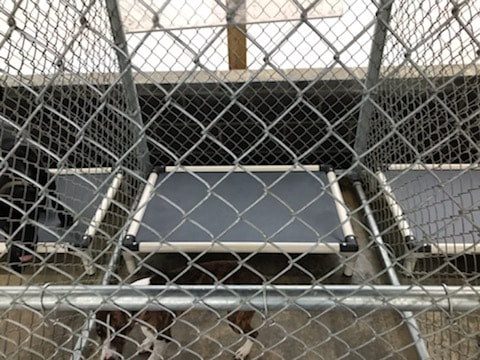

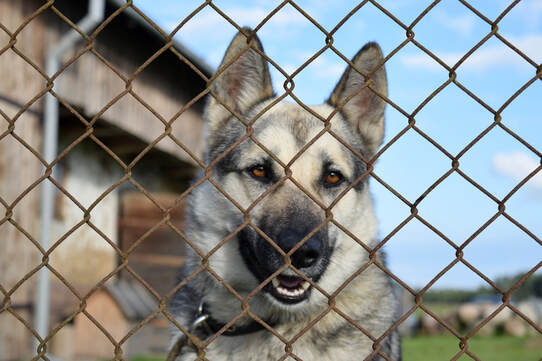




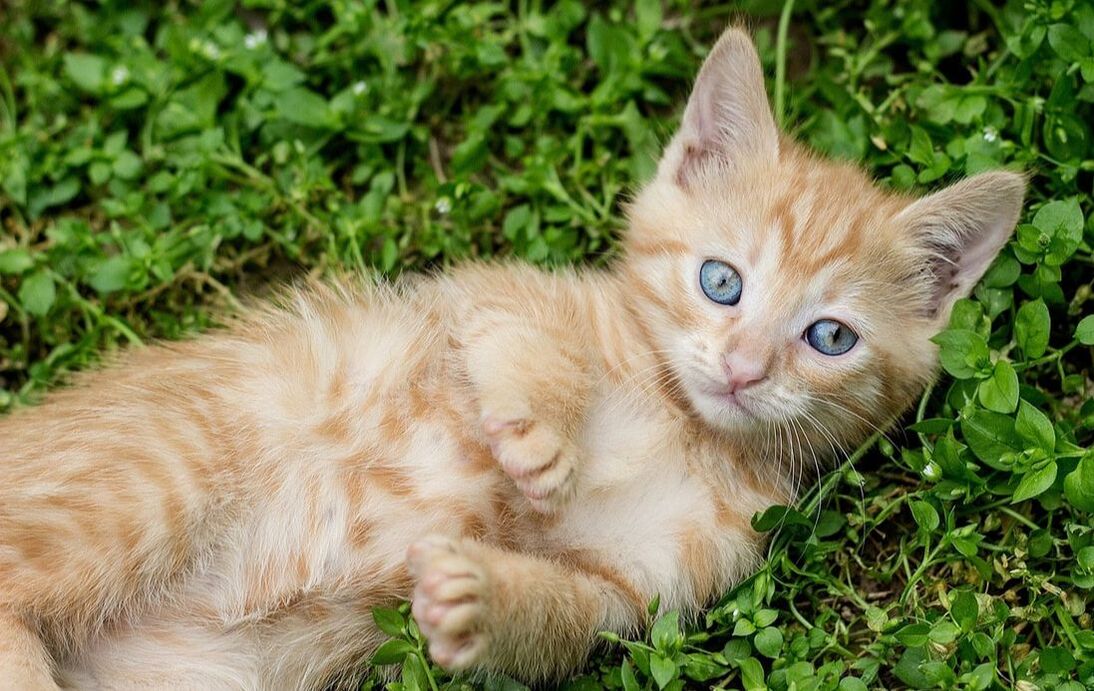





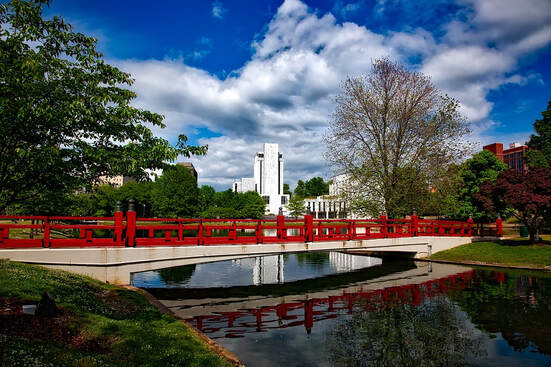
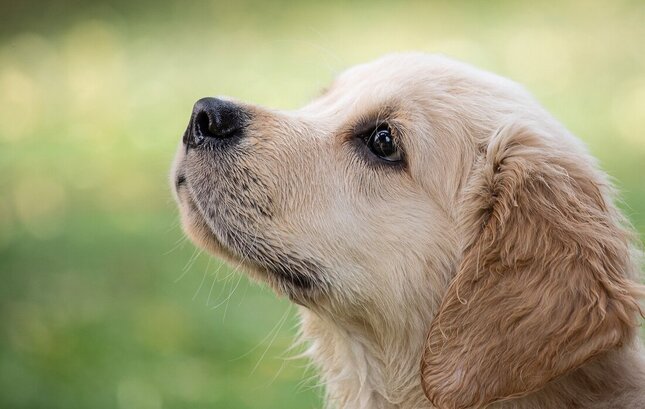

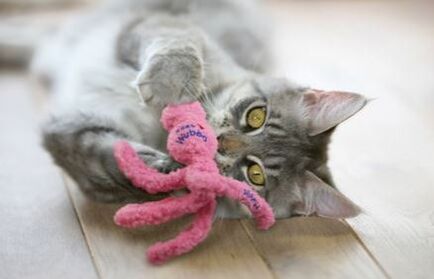
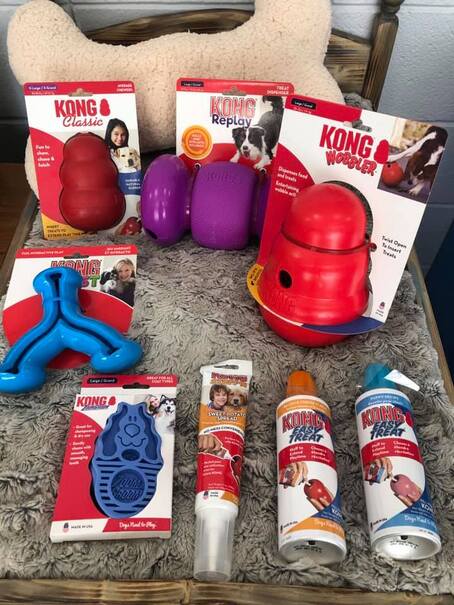
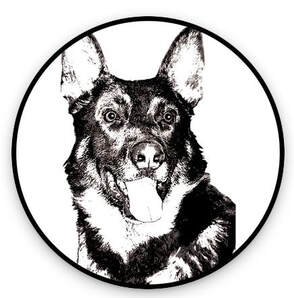




 RSS Feed
RSS Feed